fires
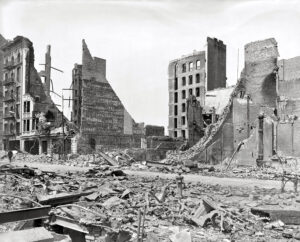 On April 18, 1906, many of the people in the San Francisco, California area were sound asleep in their beds. It was, after all, 5:13am. Suddenly, the people were jolted awake by an earthquake, which was estimated to be close to 8.0 on the Richter scale. When the quake struck San Francisco, California, it toppled numerous buildings. The cause of the quake was a slip of the San Andreas Fault over a segment about 275 miles long. The resulting shock waves could be felt from southern Oregon down to Los Angeles.
On April 18, 1906, many of the people in the San Francisco, California area were sound asleep in their beds. It was, after all, 5:13am. Suddenly, the people were jolted awake by an earthquake, which was estimated to be close to 8.0 on the Richter scale. When the quake struck San Francisco, California, it toppled numerous buildings. The cause of the quake was a slip of the San Andreas Fault over a segment about 275 miles long. The resulting shock waves could be felt from southern Oregon down to Los Angeles.
At that time, San Francisco’s had a variety of brick buildings and wooden Victorian structures that were not really earthquake reinforced. Nobody knew about making buildings strong enough to resist destruction from an earthquake. It was one of the things we would learn from the results of a disaster. It seems that with each disaster, we learn how to prevent the loss of so many buildings and lives. The old buildings were devastated. Along with the collapsed buildings, came devastating fires, and because many of the water mains had broken, firefighters were prevented from stopping 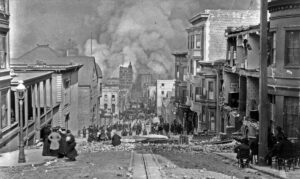 the fires. Firestorms soon developed citywide. US Army troops from Fort Mason reported to the Hall of Justice around 7am, and San Francisco Mayor E.E. Schmitz set a dusk-to-dawn curfew and authorized soldiers to shoot to kill anyone found looting. Disasters like these always seem to bring out the worst in people, even those who might not have done such things under normal circumstances.
the fires. Firestorms soon developed citywide. US Army troops from Fort Mason reported to the Hall of Justice around 7am, and San Francisco Mayor E.E. Schmitz set a dusk-to-dawn curfew and authorized soldiers to shoot to kill anyone found looting. Disasters like these always seem to bring out the worst in people, even those who might not have done such things under normal circumstances.
As significant aftershocks continued, firefighters and US troops fought desperately to control the ongoing fires. Sadly, that sometimes meant dynamiting whole city blocks to create firewalls. Many people were trapped where they were, because the fires prevented their escape, even though they were not stuck in a collapsed building. Finally, on April 20th, several thousands of refugees were evacuated from the foot of Van Ness Avenue. The army would eventually house 20,000 refugees in more than 20 military-style tent camps across the city. The people had no idea how long they might have to be there.

Most of the fires were extinguished by April 23rd, and the authorities started the task of rebuilding the devastated city. In all, approximately 3,000 people lost their lives as a result of the Great San Francisco Earthquake and the devastating fires it inflicted upon the city. Almost 30,000 buildings were destroyed, including most of the city’s homes and nearly all the central business district. The rebuilding would take a long time, and the new structures were reinforced to be able to better withstand the shaking of the San Andreas fault. This quake may not have been the “Big One” that is predicted, but at an estimated 7.9 or 8.0, it was right up there.
 Jumping out of a perfectly good airplane…known by most of us as a parachute jump…is something that the majority of us would probably not do. Still, there are many people that love to jump, and others who would love to try it. I would have thought that this was a rather new hobby, and a even fairly new way to fight fires or fight wars, but I would be wrong. The first parachute jump is said to have taken place in 1797…yes, I said 1797!! How could that be? There weren’t even any planes?
Jumping out of a perfectly good airplane…known by most of us as a parachute jump…is something that the majority of us would probably not do. Still, there are many people that love to jump, and others who would love to try it. I would have thought that this was a rather new hobby, and a even fairly new way to fight fires or fight wars, but I would be wrong. The first parachute jump is said to have taken place in 1797…yes, I said 1797!! How could that be? There weren’t even any planes?
That first parachute jumper was André-Jacques Garnerin from a hydrogen balloon 3,200 feet above Paris. Military jumpers jump at altitudes between 15,000 feet and 35,000 feet…which seems a bit high to me, but what do I know. The lowest altitude to jump is an almost suicidal 100 feet. That put Garnerin’s jump on the low end of the safe spectrum. Garnerin first came up with the idea of using air resistance to slow an individual’s fall from a high altitude while he was a prisoner during the French Revolution. Although he never employed a parachute to escape from the high ramparts of the Hungarian prison where he spent three years, Garnerin never lost interest in the concept of the parachute. He thought that given enough height, he could have escaped from that prison.
After he was released, he continued to experiment with the idea. Then in 1797, he completed his first parachute. The parachute consisted of a canopy 23 feet in diameter, attached to a basket with suspension lines. He was finally ready. On October 22, 1797, Garnerin attached the parachute to a hydrogen balloon and  ascended to an altitude of 3,200 feet. He then climbed into the basket and cut the parachute loose from the balloon. To say it was a perfect trial, would be an epic mistake. Garnerin had failed to include an air vent at the top of the prototype, and he oscillated wildly in his descent. Nevertheless, he landed shaken but unhurt half a mile from the balloon’s takeoff site. Unless you are an expert on parachutes, or even an amateur, you probably wouldn’t know about the vent hole. Nevertheless, it is quite important. I would expect that Garnerin’s wife would have been ready to choke him for trying something so crazy, but I would be wrong. In 1799, Garnerin’s wife, Jeanne-Genevieve, became the first female parachutist. I guess he married a woman who was as much an adventurist as he was. They continued on with their work, and in 1802, Garnerin made a spectacular jump from 8,000 feet during an exhibition in England. Unfortunately, he died in a balloon accident on August 18, 1823 while preparing to test a new parachute.
ascended to an altitude of 3,200 feet. He then climbed into the basket and cut the parachute loose from the balloon. To say it was a perfect trial, would be an epic mistake. Garnerin had failed to include an air vent at the top of the prototype, and he oscillated wildly in his descent. Nevertheless, he landed shaken but unhurt half a mile from the balloon’s takeoff site. Unless you are an expert on parachutes, or even an amateur, you probably wouldn’t know about the vent hole. Nevertheless, it is quite important. I would expect that Garnerin’s wife would have been ready to choke him for trying something so crazy, but I would be wrong. In 1799, Garnerin’s wife, Jeanne-Genevieve, became the first female parachutist. I guess he married a woman who was as much an adventurist as he was. They continued on with their work, and in 1802, Garnerin made a spectacular jump from 8,000 feet during an exhibition in England. Unfortunately, he died in a balloon accident on August 18, 1823 while preparing to test a new parachute.
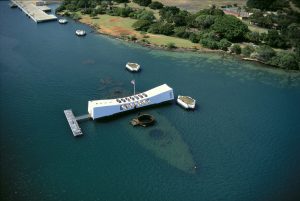 Probably the most notable memorials of the December 7, 1941 attack on Pearl Harbor, is the Arizona Memorial, which floats atop the sunken ship USS Arizona, which sank during that attack, taking with it 1,177 men. In all, the Japanese attack on Pearl Harbor, took the lives of 1998 navy personnel, 109 Marines, 233 army personnel and 48 civilians that were killed in that bombing which resulted in 2,402 soldiers killed and 1,282 military personnel and civilians wounded. Over half of the fatalities of that dreadful day occurred on the USS Arizona.
Probably the most notable memorials of the December 7, 1941 attack on Pearl Harbor, is the Arizona Memorial, which floats atop the sunken ship USS Arizona, which sank during that attack, taking with it 1,177 men. In all, the Japanese attack on Pearl Harbor, took the lives of 1998 navy personnel, 109 Marines, 233 army personnel and 48 civilians that were killed in that bombing which resulted in 2,402 soldiers killed and 1,282 military personnel and civilians wounded. Over half of the fatalities of that dreadful day occurred on the USS Arizona.
The USS Arizona had one more situation that would make it unique…in a tragic way. There were 38 sets of brother stationed on the USS Arizona. The brothers totaled 79 men. Of these 79 brothers, 63 lost their lives that day. There were three sets of three brothers: the Beckers, the Dohertys, and the Murdocks. Only one of each of the sets of three survived. Of the 38 sets of brothers on the USS Arizona, 23 complete sets were lost. There was also a father/son set on the USS Arizona…both of whom were killed in the attack. This is in no way to say that any of the other people killed in the Pearl Harbor attack of December 7, 1941 were less important that these brothers or the father and son set, because they weren’t. Every person that served when out nation was brutally attacked that day, gave their lives for their country. The brothers serving was unusual, in that the military tries not to place siblings together,  lest they both be killed, but these men requested this. They liked having their brother there with them. I can understand that. Long months away from family can be very lonely.
lest they both be killed, but these men requested this. They liked having their brother there with them. I can understand that. Long months away from family can be very lonely.
The explosion and subsequent fires on the USS Arizona killed 1,177 sailors and marines instantly. The entire front portion of the ship was destroyed, because the fire burned everything in its path. To make matters worse, the fires continued for 2½ days, causing the bodies that were there to be cremated before anyone could located and removed. Out of a crew of 1,511 men on the USS Arizona, only 334 survived. Of the dead, only 107 were positively identified, due to the immense fire. The remaining 1,070 casualties fell into three categories: (1) Bodies that were never found; (2) Bodies that were removed from the ship during salvage operations and were severely dismembered or partially cremated that identification was impossible. DNA testing was unheard of in 1941. These bodies were placed in temporary mass graves, and later moved and reburied and marked as unknowns, at the National Memorial Cemetery of the Pacific (Punchbowl) in 1949; and (3) Bodies located in the aft (rear) portion of the ship. These remains could have been recovered, but were left in the ship due to their unidentifiable condition. The injuries to these bodies indicated that most of these crew members died from the concussion from the massive explosion.
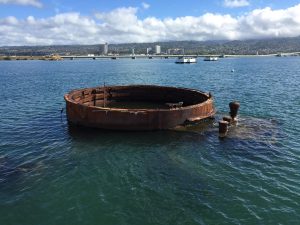 Everyone of the people who lost their lives on December 7, 1941, at Pearl Harbor, were heroes. Their families were left to mourn their loss, mostly without the closure that can be found when there is a body to bury. The horrific attack marked the inevitable entrance of the United States into World War II, and if the Japanese thought they could beat the United States with this sneak attack, they soon found out just how wrong they were. They had awakened the “sleeping giant” and they would be sorry they did. Today we honor all those who dies at Pearl Harbor, but also, all who survived and went forward to avenge their fallen comrades. We will never forget their sacrifice. We are forever grateful.
Everyone of the people who lost their lives on December 7, 1941, at Pearl Harbor, were heroes. Their families were left to mourn their loss, mostly without the closure that can be found when there is a body to bury. The horrific attack marked the inevitable entrance of the United States into World War II, and if the Japanese thought they could beat the United States with this sneak attack, they soon found out just how wrong they were. They had awakened the “sleeping giant” and they would be sorry they did. Today we honor all those who dies at Pearl Harbor, but also, all who survived and went forward to avenge their fallen comrades. We will never forget their sacrifice. We are forever grateful.
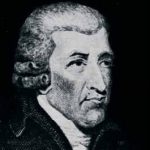
 Human beings have always had an interest in fire. Of course, fires have been around…forever, but people didn’t always have the ability to control them, or even get them started. Then 1826, John Walker was stirring a pot of chemicals when he noticed a dried lump had formed on the end of the mixing stick. Without thinking, John tried to scrape the dried glob. Suddenly, the stirring stick ignited. Immediately he knew he had found something amazing. So, he made lots more of his “friction lights” to sell at the local bookstore.
Human beings have always had an interest in fire. Of course, fires have been around…forever, but people didn’t always have the ability to control them, or even get them started. Then 1826, John Walker was stirring a pot of chemicals when he noticed a dried lump had formed on the end of the mixing stick. Without thinking, John tried to scrape the dried glob. Suddenly, the stirring stick ignited. Immediately he knew he had found something amazing. So, he made lots more of his “friction lights” to sell at the local bookstore.
The “friction lights” were three inches long and came neatly in a box with a piece of sandpaper. Walker wasn’t interested in patenting the idea, so Samuel Jones copied the matches and sold “Lucifers.” They were a little more practical than Walker’s friction lights. Lucifers were shorter and came in a smaller cardboard box for easy carrying. Too bad John Walker didn’t patent his product. Imagine how rich he would have become. Matches are still used in lots of places.
A Chinese book titled “Records of the Unworldly and the Strange,” by Tao Gu, makes reference to the earliest description of a match-like product. They were called “fire-inch sticks” and used sulfur to start the flame. Still, they were not strikeable, which makes me wonder how they worked exactly. French chemist Jean Chancel invented the first self-igniting match in 1805. Mr. Chancel’s method involved a wooden splint tipped with sugar and potassium chlorate that was carefully dipped into a small bottle of concentrated sulfuric acid. Chancel’s 
 method was highly unpleasant and dangerous. The mix of chemicals produced a yellow smelly gas called chlorine dioxide, which explodes when it comes into contact with pretty much anything. Today, matches are made with non-poisonous red phosphorus, discovered by Johan Edvard Lundstrom. The Diamond Match Company was the first to sell “safety matches” in the United States, forfeiting their patent rights to allow all match companies to produce safe matches. Still, we can trace it all back to the accidental invention of John walker, pharmacist.
method was highly unpleasant and dangerous. The mix of chemicals produced a yellow smelly gas called chlorine dioxide, which explodes when it comes into contact with pretty much anything. Today, matches are made with non-poisonous red phosphorus, discovered by Johan Edvard Lundstrom. The Diamond Match Company was the first to sell “safety matches” in the United States, forfeiting their patent rights to allow all match companies to produce safe matches. Still, we can trace it all back to the accidental invention of John walker, pharmacist.
 When we think of deployment, we think of the military and of war, but there are other ways to be deployed too, and some of them do not even include the military. Every year, thousands of firefighters are separated from their family members, some of them for months at a time. For the most part, these are wildland firefighters, but sometimes they even have to enlist the help of teams from cities around the country. Wildland fires are not bound by the schedules of humans. Once they get going, they take on a life of their own. Firefighters are in it for the long haul, and many wildland firefighters go from fire to fire, spending the entire fire season far away from their families.
When we think of deployment, we think of the military and of war, but there are other ways to be deployed too, and some of them do not even include the military. Every year, thousands of firefighters are separated from their family members, some of them for months at a time. For the most part, these are wildland firefighters, but sometimes they even have to enlist the help of teams from cities around the country. Wildland fires are not bound by the schedules of humans. Once they get going, they take on a life of their own. Firefighters are in it for the long haul, and many wildland firefighters go from fire to fire, spending the entire fire season far away from their families.
The other night my husband, Bob and I were watching a television program called FireStorm. The show focused on not just what happens during a wildfire, but also on the people who are affected by the fire, that most of us never think about…the firefighters. These are the people who leave their families at home and head out to fight a fire at a moments notice. Some of these people are gone for as much as nine months out of the year, going from fire to fire. These people include the smoke jumpers, the tanker 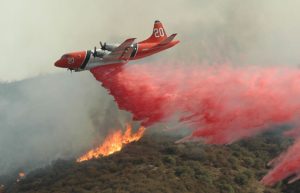 plane personnel, the hotshot units, and sometimes teams from cities in the area, as well as the Bureau of Land Management, and the Forest Service firefighting teams. These people talked about missing everything from school functions to weddings and childbirth. The fires wait for no man, and people depend on these men and women to drop everything and come quickly to try to save their homes.
plane personnel, the hotshot units, and sometimes teams from cities in the area, as well as the Bureau of Land Management, and the Forest Service firefighting teams. These people talked about missing everything from school functions to weddings and childbirth. The fires wait for no man, and people depend on these men and women to drop everything and come quickly to try to save their homes.
Smoke jumpers are especially isolated. They jump into a fire area and they are pretty much on their own for up to 3 weeks. The have to pack supplies, tents, and water with them. Part of it is dropped with the smoke jumpers and part of it with it’s own parachute. These firefighters are on their own now…in the middle of the monster. Obviously, they have ways out, but often it is by helicopter. They have to be alert at all times, and there is no time for fun and games. Smoke jumpers are essentially seal teams, when compared to the military. They go out on missions that no one else wants to attempt, and most often, they come back alive too. That is not always the case of course, because some of these teams have been overtaken and killed like the Prineville,  Oregon hotshot team killed on Storm King Mountain in Colorado, when the fire exploded and ran up the hill overtaking them. They paid the ultimate sacrifice for other people in an effort to save lives and homes.
Oregon hotshot team killed on Storm King Mountain in Colorado, when the fire exploded and ran up the hill overtaking them. They paid the ultimate sacrifice for other people in an effort to save lives and homes.
Firefighters who go out for months at a time fighting wildfires all over the country, are truly just as much deployed as their military counterparts, but we seldom think about the family side of their time fighting the fires. The spouses and children, and even parents and siblings, waiting and praying that their firefighter will make it home. It is a different kind of deployment, but it is a deployment nevertheless.
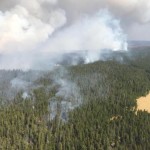
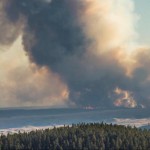 There is a fire burning in Yellowstone National Park. There are fires burning all over the western United States, as a matter of fact, but this particular fire bring back memories of the last big fire in Yellowstone National Park, and just how upset everyone was over the Let It Burn policy. Now, here we are again with a lightning caused fire burning in Yellowstone National Park, and no effort being made to fight it…unless structures end up being in danger of destruction.
There is a fire burning in Yellowstone National Park. There are fires burning all over the western United States, as a matter of fact, but this particular fire bring back memories of the last big fire in Yellowstone National Park, and just how upset everyone was over the Let It Burn policy. Now, here we are again with a lightning caused fire burning in Yellowstone National Park, and no effort being made to fight it…unless structures end up being in danger of destruction.
As with the 1988 fire, they tell us that the Natural Burn policy, another name for the Let It Burn policy, is in effect for this fire. The biggest problem with that policy is, of course, is that a fire burning unchecked can get so far out of control that it burns beyond human ability to put it out. It becomes an impossible task. That is what happened in 1988, and the whole nation was angry about it. In the end, that fire burned 1.2 million acres. Many people had the impression that the Park Service had failed badly. Nearly a third of Yellowstone National Park was badly burned. The Park Service said that the situation was inevitable because of the drought. Still, most people, me included, felt that if they had tried to fight it sooner, they could have saved a lot of the park from the hideous scarring damage it ended up with.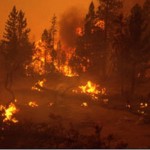

I understand that Yellowstone National Park has several fires each year, and that they usually burn themselves out in a short period of time, but in drought years, the Park Service simply can’t allow the fires to go. My concern with the current fire is that we are already at 2594 plus acres burned. How quickly is this fire going to get out of hand and how long before they will decide to do something about it?
The Yellowstone National Park fire of 1988 started in June and burned into November. It is a summer I will never forget. Our skies were constantly filled with smoke. The air stunk from the acrid smoke. It was hard for people to breathe. You couldn’t get away from it. I know this is how every person who lives in a fire area feels. I know I don’t have to explain this to anyone who has been around fires much. They already know more about wildfires than they ever wanted to.
The important thing for the government and the park service to remember is that the people of this nation love 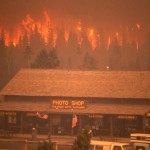
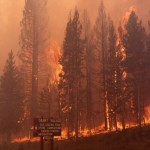 Yellowstone National Park, our oldest national park. It existed before the states where it is located were even states. I truly understand that fires are a natural part of the forest ecosystem, and that they get rid of dry brush that could bring about a worse fire, but I can’t see that it serves any good purpose to let 1.2 million acres of beautiful forest land burn and not even try to stop it. It destroys the homes of wildlife. It hurts the economy of the area it is in. All I ask is that the Park Service and the government remember just how important Yellowstone National Park is to the people of this nation.
Yellowstone National Park, our oldest national park. It existed before the states where it is located were even states. I truly understand that fires are a natural part of the forest ecosystem, and that they get rid of dry brush that could bring about a worse fire, but I can’t see that it serves any good purpose to let 1.2 million acres of beautiful forest land burn and not even try to stop it. It destroys the homes of wildlife. It hurts the economy of the area it is in. All I ask is that the Park Service and the government remember just how important Yellowstone National Park is to the people of this nation.
 This year has been unique in a horrible sort of way. We are used to California having fires every year when the Santa Ana Winds kick in, bringing scorching heat that dries out the vegetation, making it vulnerable to the smallest spark. Once the fire starts, they are difficult to contain because of the same winds that started the problem in the first place. We hear of these fires every year…sadly it can seem almost routine…even though it shouldn’t. This year is different, however. This year the whole western coast seems to be on fire. The Redwoods are in danger. Washington, Idaho, and Oregon are also going up in smoke.
This year has been unique in a horrible sort of way. We are used to California having fires every year when the Santa Ana Winds kick in, bringing scorching heat that dries out the vegetation, making it vulnerable to the smallest spark. Once the fire starts, they are difficult to contain because of the same winds that started the problem in the first place. We hear of these fires every year…sadly it can seem almost routine…even though it shouldn’t. This year is different, however. This year the whole western coast seems to be on fire. The Redwoods are in danger. Washington, Idaho, and Oregon are also going up in smoke.
The Pacific Northwest has always been the rainforest of the United States, receiving rain approximately 155 days a year. Since Wyoming gets snow much more often than rain, and in recent years, we haven’t received as much of that as we used to, suffice it to say that we don’t even come close to the amount of rain the Pacific Northwest normally gets. This year however, has found the Pacific Northwest oddly void of rainfall. Wyoming, by a stark contrast, has had a very rainy summer. As someone who doesn’t like days 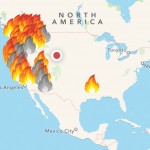 and days of dreary rainfall, that has been a little much for me, but then when I look at the west with its fires, and the rest of the United States largely void of fires, I have to be thankful for the rain. It seems that the only place that is getting very little rain is the west coast.
and days of dreary rainfall, that has been a little much for me, but then when I look at the west with its fires, and the rest of the United States largely void of fires, I have to be thankful for the rain. It seems that the only place that is getting very little rain is the west coast.
I have looked at fire maps many times over the years, but I don’t ever recall the maps having such a lopsided look to them. Nevertheless, that is the look of the current fire map. There is only one significant fire that is not in the west. Our skies are filled with smoke that has rolled in from the west. The mountain is pale behind a curtain of smoky haze, and everything smells burnt…and I’m not even near a fire. I cannot begin to imagine how bad the smoke and the smells are in the thick of the fires. Town after town is being evacuated. Homes, hopes, and dreams are being lost…not to mention lives. It just tears at my heart to think of the devastation to some of the most beautiful rainforest areas of our nation. Places like the Redwoods really could be gone forever, and I can’t begin to imagine how long it will take to bring back the beautiful, moss and fern filled areas of the 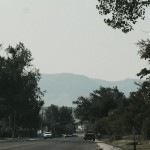 rainforest.
rainforest.
With family and friends all along the west coast, I have been in constant prayer for protection for them, and especially for rain with no lightning. There are some years when fires are so bad, that people can’t wait for summer to end, hoping that the cooler weather will slow down the devastation. I have a feeling that the only thing that will do that will be winter snow or rain, so for their sake, I will agree with their prayers. We have had bad fire years here too, but it never seemed to get quite as bad as it has on the west coast this year. Fires anywhere are awful, but when they are in an area known for it rain, it is simply shocking.
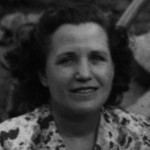 I have been reading my Great Aunt Bertie Schumacher’s journal for a while now, and every time I pick it up I find something new. She started her journal by talking about how any writer can become famous in time, simply by observing the events around them and writing about those events, how they made people feel, and what happened because of those events. As a writer myself, I began to think about what she said, because there really is a vast difference, I think, between a writer and a reporter. A reporter simply tells the events as they happened, but a writer elaborates on the events, the people involved, and their feelings. There are reporters who are writers, obviously, but I think it would be very hard for a writer not to interject their thoughts and feelings into a report.
I have been reading my Great Aunt Bertie Schumacher’s journal for a while now, and every time I pick it up I find something new. She started her journal by talking about how any writer can become famous in time, simply by observing the events around them and writing about those events, how they made people feel, and what happened because of those events. As a writer myself, I began to think about what she said, because there really is a vast difference, I think, between a writer and a reporter. A reporter simply tells the events as they happened, but a writer elaborates on the events, the people involved, and their feelings. There are reporters who are writers, obviously, but I think it would be very hard for a writer not to interject their thoughts and feelings into a report.
Aunt Bertie wanted to tell a little bit about the things that were going on in their time. Still, she could not help but put into words how she felt about the events of the day. She mentioned that the first Kindergarten was formed in 1873. At that time there were only about 200 high schools in the entire country, but by 1900 there were 6000, along with colleges that were heavily endowed by the Rockefeller, Stanford, and Vanderbilt families. Fisk College for “blacks” came into being. Women were coming to the foreground. Football became a part of college life. You could become a doctor in four months…later it took three years, and we all know it takes much longer now. At that time, 98% of children were in the grades. Aunt Bertie mentions that it was thought that education was a cure all. Authors like Emily Dickinson, Bret Hart, and Mark Twain tried to enrich the world. There were streetcar and yacht races, P.T Barnum Circus, Dwight Moody held mass revivals, and McGuffy’s Reader taught moral lessons. And then she tells about the thing that bothers her the most, when she said, “But all this did not abolish CHILD LABOR!”  It seemed to Aunt Bertie that there were so many changes that the nation was seeing, but the one thing that appalled her the most at the time, was still there, and still endangering the lives of children. It was so hard for her to imagine that with everything else moving with such monumental steps toward a more modern civilization, that was so much more educated, that no one could stop child labor. In fact it seemed to her that no one noticed it, or even cared at all.
It seemed to Aunt Bertie that there were so many changes that the nation was seeing, but the one thing that appalled her the most at the time, was still there, and still endangering the lives of children. It was so hard for her to imagine that with everything else moving with such monumental steps toward a more modern civilization, that was so much more educated, that no one could stop child labor. In fact it seemed to her that no one noticed it, or even cared at all.
Her writings picture disasters, such as the panic in 1873, at the height of the reconstruction of the 1870’s…widespread unemployment, bankruptcy of many people, and failure of businesses, the Great Chicago fire and fires in Wisconsin, Boston, and other places that caused the failure of Insurance Companies who did not have enough Reserves to cover all of these disasters, railroad strikes and violence. Then she mentions what she terms “the sins of society”, one million people living in New York slums…ten to fifteen people in three rooms. The thought of so many people being forced to live in such appalling conditions tore at Aunt Bertie’s heart. Somehow, these things just should not be, and yet this was the world we were living in at that time.
Aunt Bertie wanted to tell about the things that were changing in our world, and how many improvements those changes were making to the world, but her tender heart just couldn’t get past the horrible injustices she could still see. There are lessons to be learned from her writings. Lessons of compassion, kindness, charity, and love for our fellow man. All too often we are so busy working on the improvements we want to make in our lives, society, and our 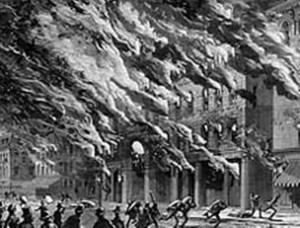 world in general, that we forget about how those things could affect the lives of others. The greed of the factory owners could not see past the profit to what their child laborers were suffering. Many changes have come from the horrors of the past. Child labor laws now protect our children, and as an insurance agent, I know that companies must hold enough in reserve to cover disastrous losses, and that while no insurance company is completely safe from failure, there is far less chance of it these days because of those reserves. While those days and events tore at Aunt Bertie’s tender heart, maybe society wasn’t totally deaf to the plight of the people after all.
world in general, that we forget about how those things could affect the lives of others. The greed of the factory owners could not see past the profit to what their child laborers were suffering. Many changes have come from the horrors of the past. Child labor laws now protect our children, and as an insurance agent, I know that companies must hold enough in reserve to cover disastrous losses, and that while no insurance company is completely safe from failure, there is far less chance of it these days because of those reserves. While those days and events tore at Aunt Bertie’s tender heart, maybe society wasn’t totally deaf to the plight of the people after all.

